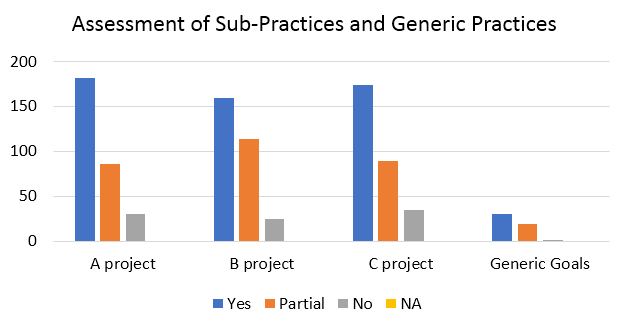Main Article Content
Abstract
XYZ company as one of the companies that provides Over-The-Top (OTT) services has problems related to defects that pass into the production environment caused by an ineffective testing process. This has an impact on user satisfaction as indicated by various user complaints when using the application. It is necessary to evaluate the maturity level which shows the ability to perform software testing and what recommendations can be given to improve the software testing process. Test Maturity Model Integration (TMMi) as a model for improving the software testing process has been widely known to improve the testing process and positively impact product quality. XYZ company, which is looking to improve its software testing process, uses the TMMi model as a reference to determine the maturity level of the testing process and provide best practices for the testing process. The assessment was conducted using the TMMi Assessment Method Application Requirement (TAMAR) and information was collected using the Delphi method. The assessment is carried out in the process area at the maturity level of level 2 and produces a rating value of P (Partially Achieved) so that the maturity level of the XYZ company software testing process is level 1 (Initial). Recommendations are prepared based on specific practices in the Test Planning and Test Environment process areas that still have weaknesses that must be improved to reach maturity level 2 (Managed). The process of preparing recommendations is assisted by the Deming cycle which is then validated with stakeholders whether these recommendations can be implemented according to the needs of XYZ company to improve the testing process.
Keywords
Article Details

This work is licensed under a Creative Commons Attribution-NonCommercial 4.0 International License.
References
- C.-J. Liu and Y.-F. Chuang, “From Sluggish to Brisk: An analysis of Taiwan׳s cable TV digitalization policy,” Telecomm Policy, vol. 39, no. 11, pp. 980–995, Dec. 2015, doi: 10.1016/j.telpol.2015.09.003.
- S. Dalal and R. S. Chhillar, “Empirical study of root cause analysis of software failure,” ACM SIGSOFT Software Engineering Notes, vol. 38, no. 4, pp. 1–7, Jul. 2013, doi: 10.1145/2492248.2492263.
- J. S. Collofello, Zhen Yang, J. D. Tvedt, D. Merrill, and I. Rus, “Modeling software testing processes,” in Conference Proceedings of the 1996 IEEE Fifteenth Annual International Phoenix Conference on Computers and Communications, Scottsdale: IEEE, Mar. 1996, pp. 289–293. doi: 10.1109/PCCC.1996.493647.
- E. van Veenendaal and J. J. Cannegieter, Test Maturity Model integration (TMMi) Results of the first TMMi benchmark – where are we today? 2012.
- M. A. T. Laksono, E. K. Budiardjo, and A. Ferdinansyah, “Assessment of Test Maturity Model: A Comparative Study for Process Improvement,” in Proceedings of the 2nd International Conference on Software Engineering and Information Management, in ICSIM 2019. New York, NY, USA: Association for Computing Machinery, 2019, pp. 110–118. doi: 10.1145/3305160.3305203.
- K. Rungi and R. Matulevičius, “Empirical Analysis of the Test Maturity Model Integration (TMMi),” in Information and Software Technologies, T. Skersys, R. Butleris, and R. Butkiene, Eds., Berlin, Heidelberg: Springer Berlin Heidelberg, 2013, pp. 376–391.
- W. Afzal et al., “Software test process improvement approaches: A systematic literature review and an industrial case study,” J Syst Softw, vol. 111, pp. 1–33, 2016.
- E. van Veenendaal, V. Garousi, and M. Felderer, “Motivations for and Benefits of Adopting the Test Maturity Model integration (TMMi),” in 14th International Conference on Software Quality, Vienna, 2022, pp. 13–19. doi: 10.1007/978-3-031-04115-0_2.
- Md. H. Rahman, Z. Rahman, Md. Al - Mustanjid, M. S. Uddin, and M. H. R. Jany, “Software Process Improvement Based on Defect Prevention Using Capability and Testing Model Integration in Extreme Programming,” in ICONCS 2020: Cyber Security and Computer Science, Ithaca: Cornell University Library, arXiv.org, Jul. 2021, pp. 270–279. doi: 10.1007/978-3-030-52856-0_21.
- A. Unudulmaz and O. Kalıpsız, “TMMI Integration with Agile and Test Process,” in Proceedings of the Evaluation and Assessment in Software Engineering, New York, NY, USA: ACM, Apr. 2020, pp. 375–378. doi: 10.1145/3383219.3386124.
- V. Garousi and E. van Veenendaal, “Test Maturity Model Integration: Trends of Worldwide Test Maturity and Certifications,” IEEE Softw, vol. 39, no. 2, pp. 71–79, Mar. 2022, doi: 10.1109/MS.2021.3061930.
- J. W. Creswell, Research Design: Qualitative, Quantitative, and Mixed Methods Approaches, 4th ed. SAGE Publications, Inc, 2014.
- D. Barrett and R. Heale, “What are Delphi studies?,” Evidence Based Nursing, vol. 23, no. 3, pp. 68–69, Jul. 2020, doi: 10.1136/ebnurs-2020-103303.
- Z. A. Hasibuan, Metodologi Penelitian Pada Bidang Ilmu Komputer Dan Teknologi Informasi. Konsep, Teknik, Dan Aplikasi. Universitas Indonesia, 2007.
- E. van Veenendaal and B. Wells, Test Maturity Model integration TMMi: Guidelines for Test Process Improvement. UTN Publishers, 2012.
- TMMi Foundation, TMMi Assessment Method Application Requirements (TAMAR) Version 2.0. TMMi Foundation, 2009.

